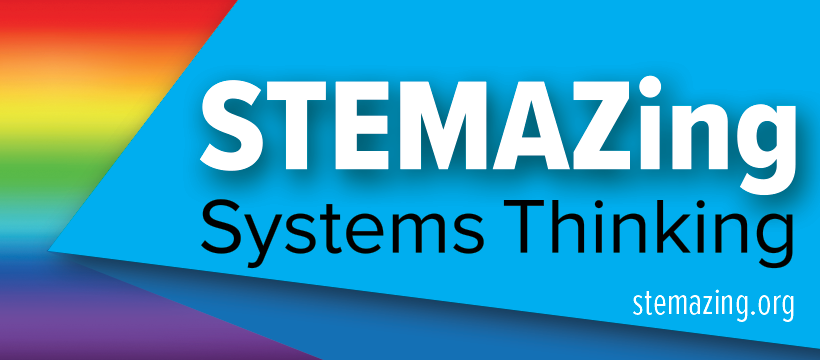#STEMontheCheap
You Be The Chemist
You Be The Chemist Activity Guides use common, inexpensive items so educators can provide hands-on learning for K-8 students to explore foundational science concepts. Hands-on learning engages young children in exploring science. These activities make real-world connections for students to see the value of science and chemistry in everyday learning and life. Since no formal lab…
Read MoreIDEAS Engineering Journal
The IDEAS Engineering Journal is designed to be used to engage students to iterate through then engineering design process using a starting model of something they have built. Two looper airplanes, pool noodle rockets, and rattle writers (aka doodle bots) are some examples you might consider. Peer critique is incorporated into the journal. It can…
Read MoreREAL Primary Colors Book
What are the primary colors? If you ask a physicist, they will have to ask you a question back. Are you talking about the primary colors of light, used for color addition, or the primary colors of paint, used for color subtraction? Use this book as a resource to learn what the REAL primary colors…
Read MoreNotice Phenomenon and Wonder Question Journals
Notice Phenomenon and Wonder Question Journals come in formats that are printer friendly and in Google classroom versions for both Slides and Docs. Great tools for helping students notice and wonder how the world works! Journal version included below include Notice Phenomenon and Wonder Question Journal. This is both pieces together and requires some assembly.…
Read MoreBinary #MicDropMath Multiply This
The following lesson engages students to explore exceptionally old algorithms used by Russian and Egyptian people to multiply two numbers together. It turns out these two algorithms are connected to the binary number system, which also serves to demonstrate that the binary number system was not invented to be the language of computers. It has…
Read MoreBinary #MicDropMath Cards
There are five versions of the Binary #MicDropMath Cards below. To perform the Binary #MicDropMath, print out page one of the binary number cards. (NOTE: You only need to print these double-sided to include page two on the backside if you are using them with younger children who can’t yet add numbers but can count…
Read MoreBinary #MicDropMath (#MicDropCS) Lessons
This series of lessons is designed to take students’ understanding of the binary number system way beyond the well known fact that it uses zeroes and ones. While each lesson can be used on its own or in different orders and combinations depending on your learning objectives, it is recommended they are used in the…
Read MoreBinary #MicDropMath Build Your Own Cards
This lesson will demonstrate to students how to make the binary #MicDropMath cards. A common question when engaging students with the Binary #MicDropMath is: “Why are those numbers on the cards?” In this lesson, they will start with blank cards and put the numbers on the cards so they understand the numbers are not random.…
Read MoreM&Ms Are Phenomenal – #SciencingAndEngineering with @TheSTEMAZingPro
Teacher/Learning Coach Guide with Best Practices and Strategies for Engaging Students [Coming Soon!] Notice Phenomenon and Wonder Question Journal If you want to use this resource in Google Classroom, you can find a Google Slides version of the Notice Phenomenon and Wonder Question Journal here: Notice Phenomenon and Wonder Question Journal for Google Classroom…
Read MoreDry Erase Phun – #SciencingAndEngineering with @TheSTEMAZingPro
Teacher/Learning Coach Guide with Best Practices and Strategies for Engaging Students [Coming Soon!] Notice Phenomenon and Wonder Question Journal If you want to use this resource in Google Classroom, you can find a Google Slides version of the Notice Phenomenon and Wonder Question Journal here: Notice Phenomenon and Wonder Question Journal for Google Classroom…
Read More